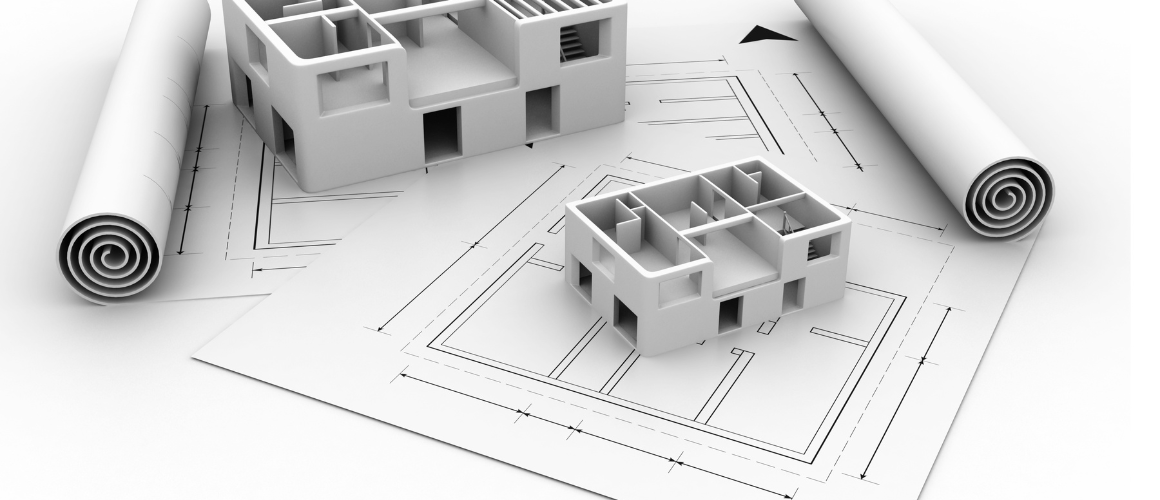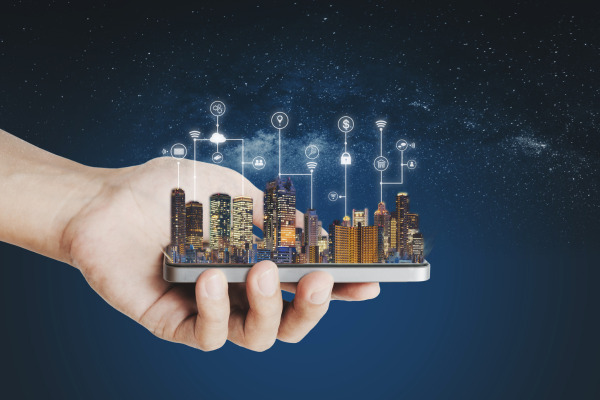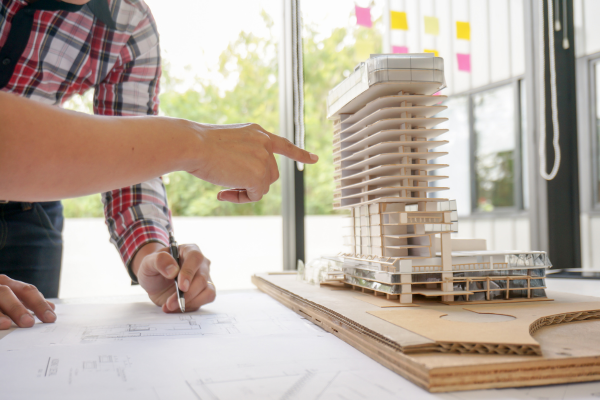
Future Foundations: The Role of Technology in Architecture
Imagine a world where buildings breathe, parks float, and streets heal themselves. Sounds like a scene from a sci-fi movie, right? But, guess what? This is the future of architecture—a space where innovation dances with design, creating not just buildings, but experiences. Welcome to Architecture Interspace, where the goal isn't just to build, but to inspire, sustain, and innovate.
Our journey through Architecture Interspace is not just about erecting structures but rethinking how we interact with our environment. It's about blending the past's wisdom with tomorrow's innovations to craft spaces that are as alive as the people who inhabit them. Here, every design tells a story, every material has a purpose, and every space invites you to dream.
So, why does this matter? Because the future is not something we enter; it's something we create. And in this blog, we're peeling back the curtain on how Architecture Interspace is setting the stage for a world where design thinks, breathes, and performs—responsibly and beautifully. Let's embark on this adventure together, exploring how innovation is not just shaping our spaces but redefining our relationship with the world around us. Welcome to a journey where architecture meets innovation, crafting timeless designs that are as much about tomorrow as they are about today.
From the towering pyramids of Egypt to the sleek skyscrapers of New York, the journey of architecture is a tale of humanity's ambition, creativity, and adaptability. Imagine the ancient builders, with nothing but sheer muscle and rudimentary tools, laying the foundation of what would become wonders of the world. These structures weren't just buildings; they were a message to the future, a testament to human ingenuity.
Fast forward a few millennia, and the scene shifts dramatically. The industrial revolution brought with it materials like steel and concrete, opening up new possibilities. Architects began to dream bigger, building not just higher, but smarter. The 20th century saw styles evolve rapidly, from the intricate Art Deco to the minimalist lines of Modernism, reflecting the changing times.
Today, we stand at the brink of another revolution in architecture. Innovation is our new tool, and sustainability our guide. Buildings are no longer static structures; they're dynamic, responding to their environment and the people within them. Architects now talk about living buildings that breathe, self-healing materials, and even structures that can vanish into their surroundings.
This evolution is not just about aesthetics or technology; it's about our changing relationship with the planet. As we've grown, so has our understanding of the impact we have on our world. The latest designs aim to harmonize with nature, using less energy and creating spaces that give back to their communities.
The story of architecture is ongoing, a continuous line from the first stone laid to the latest building completed. Each era builds on the last, pushing boundaries and redefining what's possible. As we look to the future, the lessons of the past remind us that architecture is more than buildings; it's the expression of our collective aspirations, a reflection of our times, and a blueprint for our future.

Landscape design is more than just adding a touch of green; it's about creating a dialogue between nature and urban life. In the future, cities will breathe through their parks and green roofs, turning concrete jungles into urban oases. Imagine stepping out of your high-rise apartment and into a park that stretches upwards, with plants and trees mingling with the architecture itself. This isn't just a dream; it's the direction in which we're heading.
Future cities will see landscape design not just as an aesthetic choice but as a necessity. Green spaces are set to become the lungs of urban areas, improving air quality, reducing urban heat, and offering sanctuaries for mental health. Projects like New York's High Line have already shown us the transformative power of integrating landscape design into urban planning. It's a place where nature and city life coexist, offering a blueprint for future developments.
Moreover, the role of landscape architects is becoming increasingly crucial as they help navigate the challenges of climate change and urbanization. Their expertise in creating resilient landscapes that can withstand the pressures of extreme weather and environmental degradation is invaluable. By designing with nature, rather than against it, we can make our cities more sustainable and livable.
The future of urban living is green, with landscape design at its heart. It's about creating ecosystems within cities that support both the environment and the well-being of their inhabitants. As we move forward, the integration of landscape design in urban planning will not just be desirable—it will be essential.
The future of architecture is unfolding right before our eyes, marked by groundbreaking innovations that promise to redefine our built environment. These innovations aren't just about the new or the novel; they're about creating smarter, more sustainable, and more responsive spaces.
Imagine buildings that heal themselves. Yes, self-healing concrete is on the horizon, capable of fixing its own cracks, dramatically reducing maintenance costs and extending the lifespan of structures. Then, there's the concept of transparent aluminum—a material that sounds straight out of science fiction, offering the strength of metal with the clarity of glass, potentially revolutionizing façades and structural elements.
Technology is also transforming architecture through the digital realm. Building Information Modeling (BIM) and Modular construction are setting new standards for efficiency, allowing buildings to be designed and constructed faster, with less waste, and greater precision. This shift towards prefabrication isn't just speeding up construction; it's making it possible to experiment with complex, innovative designs that were previously unattainable.

But it's not all about the materials and methods; it's also about the impact. Pollution-absorbing bricks and green roofs are turning buildings into active participants in environmental sustainability, cleaning the air and reducing urban heat islands. Meanwhile, smart cities leverage big data to create spaces that adapt to our needs, optimizing energy use and improving our quality of life.
The future of architecture is a blend of innovation, sustainability, and technology. It's a future where buildings not only shelter but also heal, inspire, and transform. As these innovations become mainstream, they'll pave the way for a new era of architecture—one that's as kind to the planet as it is conducive to human well-being.
In the realm of Architecture Interspace, several pioneering projects and concepts stand as beacons of innovation, pointing the way to future directions in architectural design and urban planning. These case studies not only showcase the potential of integrating technology and sustainability into our built environments but also offer insights into how we might live, work, and interact within these spaces in the years to come.
One such example is the Edge in Amsterdam, often cited as one of the greenest and most intelligent buildings in the world. Utilizing a combination of energy-efficient design, smart technology, and a user-focused approach, the Edge redefines what it means to work in a modern office space. Its ability to adapt to the needs and preferences of its users, while minimizing its environmental footprint, provides a glimpse into the future of workplace design.
Another groundbreaking project is Singapore's Gardens by the Bay, a testament to innovative landscape architecture and sustainable practices. With its Supertree structures and climate-controlled biodomes, it merges nature and technology in a way that enhances both the urban landscape and the city's biodiversity. Gardens by the Bay exemplifies how public spaces can serve as both recreational areas and vital components of a city's ecological infrastructure.
Looking ahead, projects like the proposed Oceanix City—a floating, sustainable urban development designed to withstand rising sea levels—illustrate the forward-thinking solutions being explored to address some of the most pressing challenges of our time, including climate change and urban density. These floating communities not only offer a viable solution to land scarcity but also embody principles of sustainability, resilience, and community living.
As we delve into the future of architecture and urban design, these case studies highlight the importance of innovation, adaptability, and sustainability. They suggest a future where buildings and cities are not just places to inhabit but living, breathing entities that respond to environmental challenges, technological advancements, and the evolving needs of society.
The future of architecture isn't just a distant dream; it's unfolding right now, in our cities, our streets, and our homes. Today's innovations in design, technology, and sustainability are shaping a world where architecture doesn't just exist but interacts—creating spaces that are more livable, more efficient, and more in tune with the environment than ever before. As we've seen through various case studies and emerging technologies, the potential for transformative, life-enhancing architecture is immense. The journey towards a future where our built environment fully embodies innovation, sustainability, and responsiveness is ongoing, and it's a journey we're all a part of. As we look to the horizon, let's embrace the possibilities, challenges, and opportunities that lie ahead, knowing that the future of architecture is not only about the spaces we create but the legacy we leave for generations to come.
Dive into the future with us! Explore our projects, join the conversation on sustainable and innovative architecture, and be part of creating spaces that inspire. Your journey into the next era of design starts here—let's build a smarter, greener, more beautiful world together.